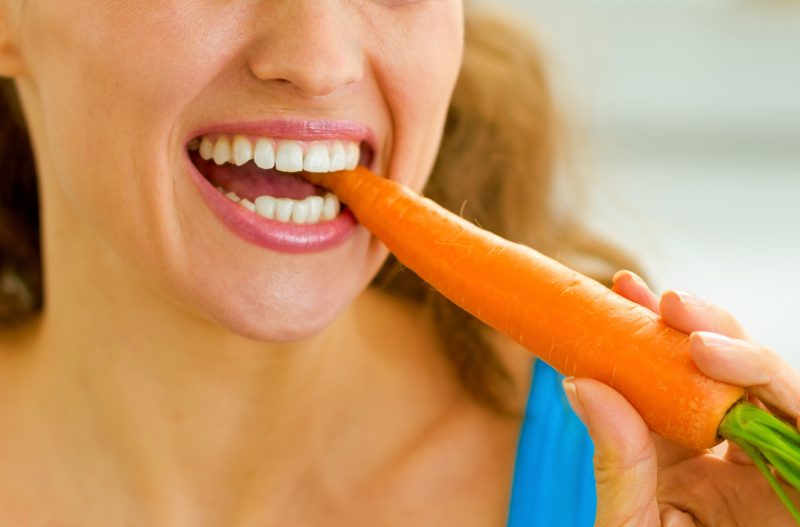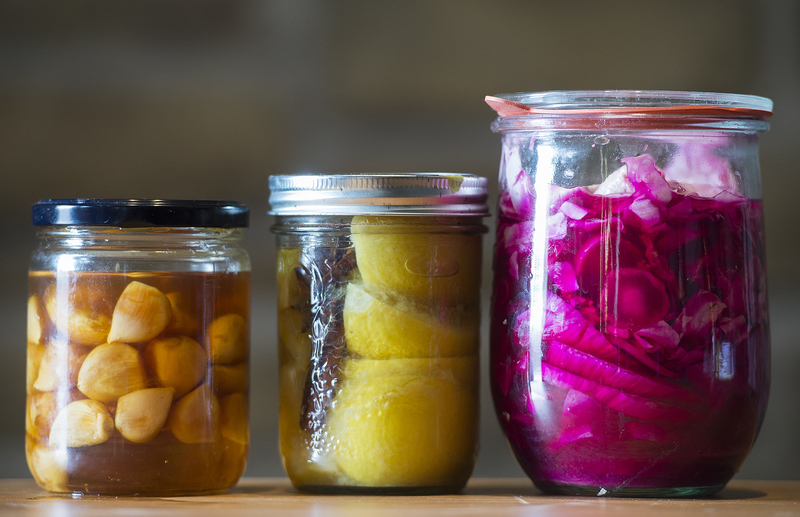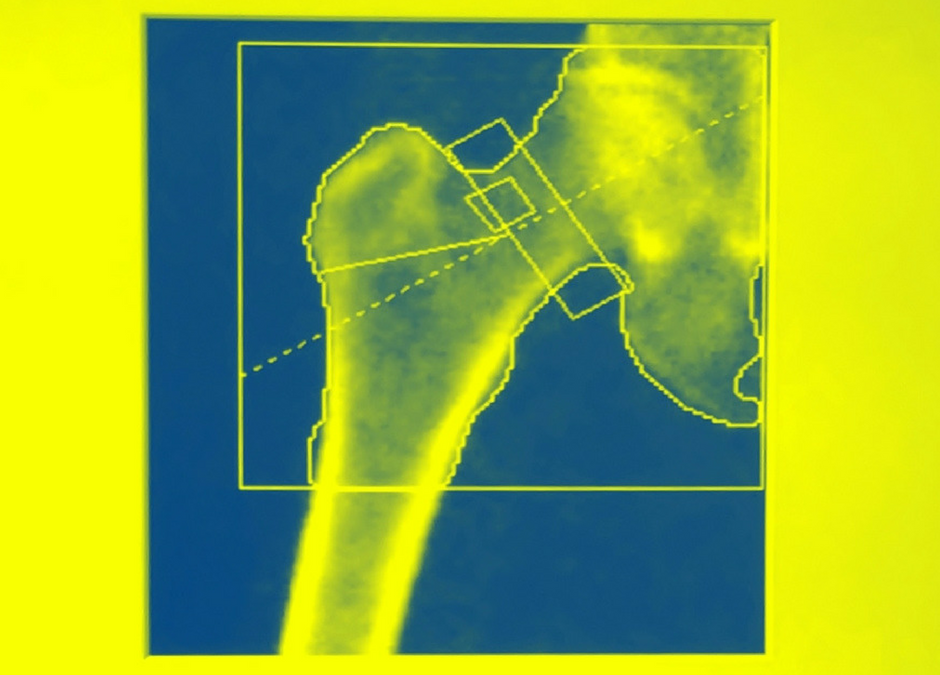 In the following article, Liane Paulson, of Wow Wow LLC, describes how fermented foods can promote optimal gut health. Learn how you can included fermented foods in your daily diet.
In the following article, Liane Paulson, of Wow Wow LLC, describes how fermented foods can promote optimal gut health. Learn how you can included fermented foods in your daily diet.
“All disease begins in the gut,” says Hippocrates, the father of medicine. If disease does begin in the gut, then healing needs to focus on the gut too. Keeping a healthy gut leads to overall better health – including bone health!
One way that good gut health is achieved is by including fermented foods in your diet. Fermented foods contain probiotics and are alive with good bacteria and yeasts that help to populate your gut. These gut microbes act as a digestive aid, helping to break down some foods and making their nutrients more available to the body. Good gut microbes bolster the immune system and can enhance mood. 90% of the serotonin in your body, a neurotransmitter associated with good mood, is produced in the gut as a result of microbial action. You have about 3 pounds of microbes in your body taking up approximately the same amount of space as your brain. Those microbes need to be nurtured and supplemented.
Some of the most common good gut microbes are in the lactobacilli family commonly found in fermented foods. The fermentation of vegetables is officially called lacto-fermentation. The “lacto” in the name refers to the lactobacillus strains that are active in the fermentation process. Natural microbes such as lactobacilli in the environment create lactic acid which is a natural preservative for food. The microbes pass into your system when you eat the food. Pickles, sauerkraut, kimchi, miso, and yogurt are a few of the more common foods you may recognize that contain lactobacilli.
Multiple studies of the effect of different strains of lactobacilli are proving that use of certain probiotics could be a welcome addition to treatment of osteoarthritis, osteoporosis, and of distal radius fractures in the elderly. Results of additional studies show that lactobacilli may help to increase bone mineral density as well, and probiotic supplements are being reviewed as a means of preventing age associated bone loss. Probiotic treatment has already been shown to improve bone formation, increase bone mass density, and prevent bone loss in mice. The positive benefits of probiotics at the gut level also help to create healthier bones!
Recently probiotic items have been popping up at farmer’s markets, health food stores, and even traditional grocery stores. Supplements are available over the counter and often recommended by health care providers. How should you introduce probiotics and fermented foods into your diet?
Consult your healthcare provider. If you are just beginning to explore introducing probiotics and fermented foods into your diet and you have any compromising health conditions, discuss with your provider. They may be able to guide you regarding specific strains of probiotics to look for or to avoid. For example, people with a sensitivity to Candida should avoid Kombucha while many other fermented foods help to fight Candida.
Start small. Because taking probiotics may build a new microbiome in your gut, when starting just try a little and build to full servings. Some people experience discomfort during the first week or two of trying new foods. If you have any adverse effects, stop and consult with your healthcare provider. Not all probiotics are for everyone. And just because a food is fermented does not mean it’s good for YOU. Everyone is different.
Read the label. Not all fermented foods are probiotic! When buying ready-made foods, read the label. Probiotic foods will be clearly labeled as containing live cultures or live probiotics.
Do not heat. To maintain the health benefits of probiotic fermented foods it is important that the food not be heated above approximately 105° F. Temperatures above 105° will kill those beneficial microbes. Canned sauerkraut, for example, is not probiotic because of the heat required in the canning process. Instead, opt for freshly fermented sauerkrauts, kimchi, or pickles, ideally having fermented for at least 3 weeks to gain optimum probiotics. Many farmer’s markets today include vendors who make delicious, fresh, fermented vegetables who often support local farmers.
Make it yourself. When antibiotics are prescribed, often people turn to yogurt to counteract negative effects such as diarrhea or yeast infection. However, even live culture yogurt may not have as many beneficial bacteria as homemade. Commercial yogurt is generally fermented for only a few hours and is often supplemented with pectin (a natural sugar) to thicken and sweeten it for the American palette. Homemade yogurt tends to ferment for 12 to 24 hours, increasing the number of microbes available in the yogurt and therefore your gut.
In Benefits of Traditional Fermented Foods, Dr. Jyoti Prakash Tamang laments that fewer and fewer people possess the traditional knowledge to create fermented foods from scratch. Despite the health benefits, because there are limited providers of fermented foods in the marketplace there is a decline in biodiversity of micro-organisms. Eating a variety of fermented foods will increase the biodiversity in your gut and give your gut more tools to improve your health.
Whether you create your food from scratch, buy ready-made foods, or somewhere in-between, probiotics are good for you — down to your bones.
Let food be thy medicine and medicine be they food. – Hippocrates
Below is a simple recipe for Fermented Carrots. It is so easy, I was able to share it recently at a summer camp for children ages 6-12. We did a variation of garlic and rosemary that the kids LOVED! We also did a variation with serrano peppers that the counselors LOVED! Give it a try!
Fermented Carrots
Ingredients
- Carrots
- Unchlorinated water
- Non-iodized salt
Equipment
- Quart sized, wide-mouth canning jar with a lid
- Weight for holding solids under brine such as a glass weight, water-filled Ziploc, or visco disc
Variations:
- 2-3 garlic cloves, peeled and cut into slivers
- 1 inch piece of fresh ginger, sliced and cut into slivers (No need to peel.)
- 1-2 jalapeno peppers sliced lengthwise into quarters (Remove seeds to white membrane to reduce heat.)
- 1 teaspoon dried dill (1 tablespoon fresh)
- 1-2 sliced green onions, a bit each of sliced red onion and sliced yellow onion
- 1 few sprigs of fresh rosemary
Instructions:
- If using a flavor variation, place what you’ll be using to flavor your carrots in the bottom of a wide mouth jar.
- Make brine by mixing 1 TBS salt with 2 cups non-chlorinated water for each pint you plan to ferment.
- Gently scrub carrots clean. Slice carrots lengthwise to one inch shorter than the height of your jar or slice crosswise into disks. Pack snugly into the jar.
- Place weight on top of carrots.
- Pour brine over the weight letting it percolate down. Stop when brine is 1 inch from the top of the jar. Jostle the jar to get the brine between all the packed carrots and add more brine, if necessary.
- Cover loosely to allow gases to release during the fermentation process.
- Place in a shallow bowl, out of direct sunlight to ferment until active bubbling stops, usually 5-10 days depending upon the temperature of your room. Some liquid may expand out of the top of your vessel. That is OK. The carrots are ready when bubbles have stopped rising to the surface, there is a slightly sour aroma and the carrots taste tangy.
- Store your carrots in the refrigerator. They may be eaten immediately but will increase in flavor with time. They will keep for up to a year, though they lose color over time.
Adapted from www.makesauerkraut.com
I have always enjoyed making food from scratch and have been excited to learn about, and now teach about, making fermented foods. This gives me more control over the length of time, and therefore the density of microbes in my foods, and it takes little time or money. I enjoy the variety of flavors I can add to sauerkrauts and other fermented vegetables which leads to a diverse menu full of flavor and good gut health.
If you want more personal instruction, come to a fermentation workshop or contact me with questions.
Contributor: Liane Paulson, Wow Wow LLC. Liane offers workshops in fermentation in the Northern Virginia region.
References used for the blog post:
Collins, F., Rios-Arce, N-D., Schepper, J., Parameswaran, N., and Mccabe, L. (November, 2017). The Potential of Probiotics as a Therapy for Osteoporosis. Microbiology Spectrum. 5. 10.1128/microbiolspec.BAD-0015-2016.
Katz, S. (2012). The Art of Fermentation. Chelsea Green Publishing. White River Junction, VT.
Lei, M, Guo, C, Wang, D., Zhang, C., and Hua, L. (2017) The effect of probiotic Lactobacillus casei Shirota on knee osteoarthritis: a randomised double-blind, placebo-controlled clinical trial. Beneficial Microbes: 8 (5) – Pages: 697 – 703.
Lei, M., Hua, L-M, Wang, D-W. (2016). The effect of probiotic treatment on elderly patients with distal radius fracture: a prospective double-blind, placebo-controlled randomised clinical trial. Beneficial Microbes: 7 (5) – Pages: 631 – 637











